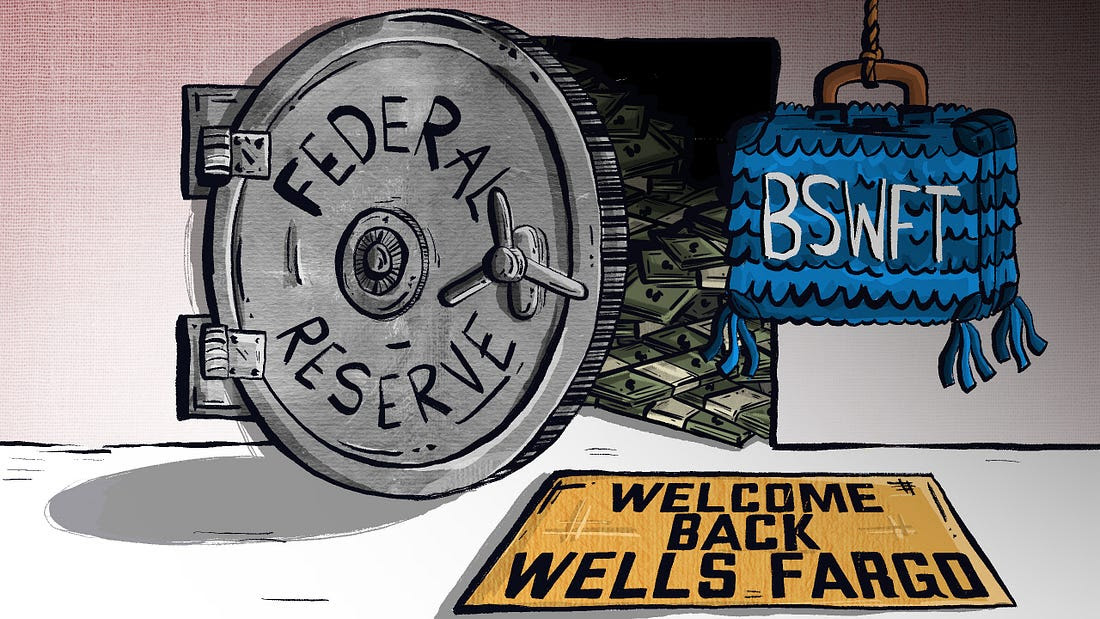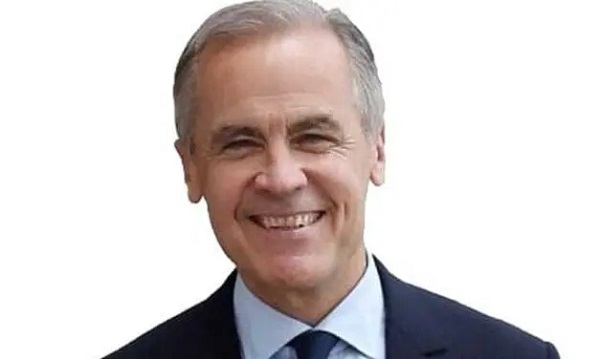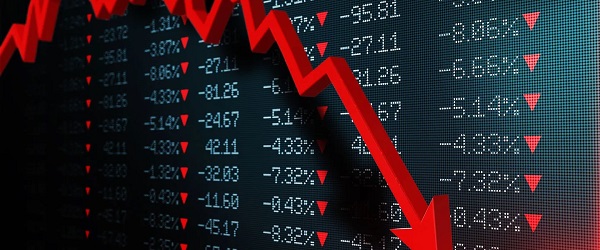Energy
How climate activists harm Canadian energy security
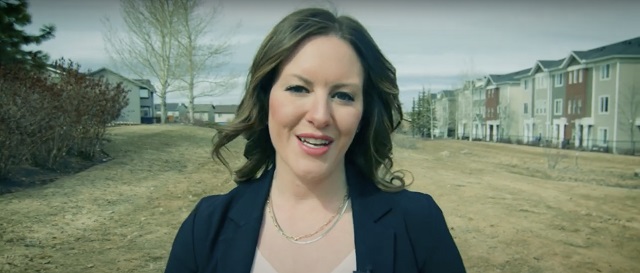
 From the Daily Caller News Foundation
From the Daily Caller News Foundation
By NICK POPE
Canadian Official Reveals Damage Eco-Activists Have Wreaked On Great White North’s Energy Security
Rebecca Schulz — the minister of environment and protected areas of Alberta, Canada — sat down with the Daily Caller News Foundation at the Canadian embassy in Washington, D.C. to discuss how climate activists, along with the country’s left-wing government, have hampered Canada’s energy security.
Alberta is a province in Western Canada that is known for its abundant natural resources, especially oil and natural gas. However, the federal government in Ottawa — led by liberal Prime Minister Justin Trudeau — has moved to restrict development in the province, harming the many blue-collar Canadians who rely on affected industries to make a living, Schulz explained to the DCNF.
“We have seen, over the last number of years, the activist, radical left starting to shape policy in a way that is, I think, very concerning, not only for just the basic needs of everyday people when it comes to safe, affordable, reliable energy, but I think, when it comes to to energy security,” Schulz told the DCNF.
General Manager working on the Keystone XL pipeline says that “hundreds of guys” have already been laid off in Wisconsin as a result of Joe Biden's executive order halting construction of the pipelinepic.twitter.com/TMOf80ph2i
— Daily Caller (@DailyCaller) January 25, 2021
“Certainly, we have a prime minister that is completely just bending to the activist base and ignoring, I think, the very real concerns of everyday commonsense as Canadians, and that’s a problem,” Schulz told the DCNF, referencing Trudeau. Later in the interview, Schulz predicted that Canadian voters will “vastly reject” Trudeau when they next head to the polls, in large part due to “the woke, ideological policies” that his government has pursued.
In Canada, one such official with deep ties to the climate activist movement shaping policy is Minister of Environment and Climate Change Steven Guilbeault. A former Greenpeace activist who once scaled Toronto’s iconic CN Tower and climbed on the roof of a government official’s private residence to install solar panels in acts of protest, Guilbeault has stated that he does not seek to implement a “secret agenda” of policies aligned with his activist past while in office, according to CBC, a Canadian news outlet.
Notably, the Biden administration counts numerous former activists among its ranks, including Bureau of Land Management (BLM) Director Tracey Stone-Manning, who was connected to radical eco-activists concocting a tree spiking plot in Idaho in the late 1980s. BLM manages federally-controlled lands for uses like energy production and livestock grazing.
“It’s really problematic because it is completely ideologically driven and devoid of common sense and the realities that people are facing every single day. And I think, you know, of course, people do care about the environment. I, of course, as minister of the environment, I care that we’re doing the right thing for the environment that we’re leaving,” Schulz continued. “You know, the places that we live, and where we develop our resources from, we’re maintaining that for future generations. But I also know that we could not survive a day without oil and gas, or products made from oil and gas and petrochemicals. And that fact isn’t changing. That, in fact, is growing so, I think it’s pretty concerning that they are also then trying to essentially stifle any opinions or statistics or facts that don’t support their narrative.”
Canada isn't planning on pulling their weight https://t.co/QKdZdoCe4G
— Daily Caller (@DailyCaller) April 20, 2023
Canada is one of America’s biggest energy suppliers, providing about 52% of all gross oil imports in 2023 and exporting nearly three trillion cubic feet of natural gas to the U.S. in 2022, according to the Canadian Energy Centre. Most of the fuel comes to America via cross-border pipelines, though some is also delivered by rail or by sea, according to a 2021 report commissioned by the American Petroleum Institute.
The Keystone XL pipeline, a major project that would have helped bring oil from Alberta to refineries along the coast of the Gulf of Mexico in the U.S., was set to be a new expansion to the systems that bring Canadian energy to America.
However, activists waged a major pressure campaign against the project, and its developers ultimately scuttled it in June 2021 after the Biden administration nixed a crucial permit and generally showed minimal enthusiasm for the project upon entering office, according to The Associated Press.
“Projects like that, of that size and scope, obviously take a significant amount of political will,” Schulz said of Keystone XL. “And I think that was a hugely disappointing decision, because we know that market access matters for energy security and meeting the needs of, I would say, Canadians and Americans, and people around the world.”
Notably, Brent Sadler — a 26-year veteran of the U.S. Navy who now works as a senior research fellow for naval warfare and advanced technology at the Heritage Foundation — agrees with Schulz’s assessment that Keystone XL would have been a positive development for North American energy security.
In a recently-published report assessing American energy security in light of the Chinese Communist Party’s (CCP) geopolitical ambitions, Sadler argued that policymakers impose “unnecessary restraints” on cross-border energy interconnection, and that security interests would be better served if they instead “get out of the way” and “permit cross-border energy infrastructure projects such as the Keystone XL pipeline.”
For now, Schulz will turn much of her focus to the Trudeau government’s proposed emissions cap for the oil and gas industry, which could see the government require energy producers to slash their emissions by about 37% relative to 2022 levels by 2030, according to Reuters. Its opponents — many of whom are located in Alberta — are characterizing the policy as a thinly-veiled production cap that will severely hurt the province’s workers and regional economy.
If finalized, the policy “would kill thousands of jobs, I would say tens of thousands of jobs, just directly in conventional oil and gas, not to mention what we’re seeing in oil sands and, of course, other related industries,” Schulz told the DCNF. “We just have a federal government that doesn’t look at any socioeconomic data on the impacts that their policy would have … No competent, responsible government would see those numbers and move ahead with that cap, but that is, in fact, what our federal Liberal government is doing in Canada.”
Automotive
Federal government should swiftly axe foolish EV mandate

From the Fraser Institute
Two recent events exemplify the fundamental irrationality that is Canada’s electric vehicle (EV) policy.
First, the Carney government re-committed to Justin Trudeau’s EV transition mandate that by 2035 all (that’s 100 per cent) of new car sales in Canada consist of “zero emission vehicles” including battery EVs, plug-in hybrid EVs and fuel-cell powered vehicles (which are virtually non-existent in today’s market). This policy has been a foolish idea since inception. The mass of car-buyers in Canada showed little desire to buy them in 2022, when the government announced the plan, and they still don’t want them.
Second, President Trump’s “Big Beautiful” budget bill has slashed taxpayer subsidies for buying new and used EVs, ended federal support for EV charging stations, and limited the ability of states to use fuel standards to force EVs onto the sales lot. Of course, Canada should not craft policy to simply match U.S. policy, but in light of policy changes south of the border Canadian policymakers would be wise to give their own EV policies a rethink.
And in this case, a rethink—that is, scrapping Ottawa’s mandate—would only benefit most Canadians. Indeed, most Canadians disapprove of the mandate; most do not want to buy EVs; most can’t afford to buy EVs (which are more expensive than traditional internal combustion vehicles and more expensive to insure and repair); and if they do manage to swing the cost of an EV, most will likely find it difficult to find public charging stations.
Also, consider this. Globally, the mining sector likely lacks the ability to keep up with the supply of metals needed to produce EVs and satisfy government mandates like we have in Canada, potentially further driving up production costs and ultimately sticker prices.
Finally, if you’re worried about losing the climate and environmental benefits of an EV transition, you should, well, not worry that much. The benefits of vehicle electrification for climate/environmental risk reduction have been oversold. In some circumstances EVs can help reduce GHG emissions—in others, they can make them worse. It depends on the fuel used to generate electricity used to charge them. And EVs have environmental negatives of their own—their fancy tires cause a lot of fine particulate pollution, one of the more harmful types of air pollution that can affect our health. And when they burst into flames (which they do with disturbing regularity) they spew toxic metals and plastics into the air with abandon.
So, to sum up in point form. Prime Minister Carney’s government has re-upped its commitment to the Trudeau-era 2035 EV mandate even while Canadians have shown for years that most don’t want to buy them. EVs don’t provide meaningful environmental benefits. They represent the worst of public policy (picking winning or losing technologies in mass markets). They are unjust (tax-robbing people who can’t afford them to subsidize those who can). And taxpayer-funded “investments” in EVs and EV-battery technology will likely be wasted in light of the diminishing U.S. market for Canadian EV tech.
If ever there was a policy so justifiably axed on its failed merits, it’s Ottawa’s EV mandate. Hopefully, the pragmatists we’ve heard much about since Carney’s election victory will acknowledge EV reality.
Daily Caller
Trump Issues Order To End Green Energy Gravy Train, Cites National Security
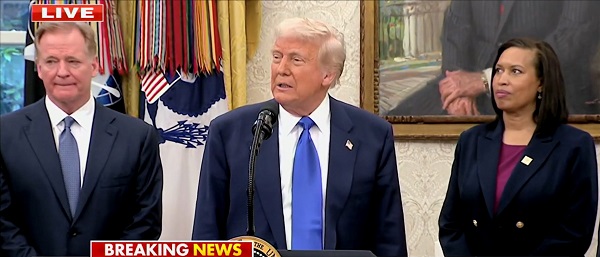

From the Daily Caller News Foundation
By Audrey Streb
President Donald Trump issued an executive order calling for the end of green energy subsidies by strengthening provisions in the One Big Beautiful Bill Act on Monday night, citing national security concerns and unnecessary costs to taxpayers.
The order argues that a heavy reliance on green energy subsidies compromise the reliability of the power grid and undermines energy independence. Trump called for the U.S. to “rapidly eliminate” federal green energy subsidies and to “build upon and strengthen” the repeal of wind and solar tax credits remaining in the reconciliation law in the order, directing the Treasury Department to enforce the phase-out of tax credits.
“For too long, the Federal Government has forced American taxpayers to subsidize expensive and unreliable energy sources like wind and solar,” the order states. “Reliance on so-called ‘green’ subsidies threatens national security by making the United States dependent on supply chains controlled by foreign adversaries.”
Dear Readers:
As a nonprofit, we are dependent on the generosity of our readers.
Please consider making a small donation of any amount here.
Thank you!
Former President Joe Biden established massive green energy subsidies under his signature 2022 Inflation Reduction Act (IRA), which did not receive a single Republican vote.
The reconciliation package did not immediately terminate Biden-era federal subsidies for green energy technology, phasing them out over time instead, though some policy experts argued that drawn-out timelines could lead to an indefinite continuation of subsidies. Trump’s executive order alludes to potential loopholes in the bill, calling for a review by Secretary of the Treasury Scott Bessent to ensure that green energy projects that have a “beginning of construction” tax credit deadline are not “circumvented.”
Additionally, the executive order directs the U.S. to end taxpayer support for green energy supply chains that are controlled by foreign adversaries, alluding to China’s supply chain dominance for solar and wind. Trump also specifically highlighted costs to taxpayers, market distortions and environmental impacts of subsidized green energy development in explaining the policy.
Ahead of the reconciliation bill becoming law, Trump told Republicans that “we’ve got all the cards, and we are going to use them.” Several House Republicans noted that the president said he would use executive authority to enhance the bill and strictly enforce phase-outs, which helped persuade some conservatives to back the bill.
-

 International2 days ago
International2 days agoChicago suburb purchases childhood home of Pope Leo XIV
-

 Daily Caller2 days ago
Daily Caller2 days agoBlackouts Coming If America Continues With Biden-Era Green Frenzy, Trump Admin Warns
-

 Daily Caller2 days ago
Daily Caller2 days ago‘I Know How These People Operate’: Fmr CIA Officer Calls BS On FBI’s New Epstein Intel
-

 Alberta8 hours ago
Alberta8 hours ago‘Far too serious for such uninformed, careless journalism’: Complaint filed against Globe and Mail article challenging Alberta’s gender surgery law
-

 Daily Caller11 hours ago
Daily Caller11 hours agoUSAID Quietly Sent Thousands Of Viruses To Chinese Military-Linked Biolab
-

 Addictions11 hours ago
Addictions11 hours ago‘Over and over until they die’: Drug crisis pushes first responders to the brink
-

 Business1 day ago
Business1 day agoPrime minister can make good on campaign promise by reforming Canada Health Act
-

 Automotive8 hours ago
Automotive8 hours agoFederal government should swiftly axe foolish EV mandate


